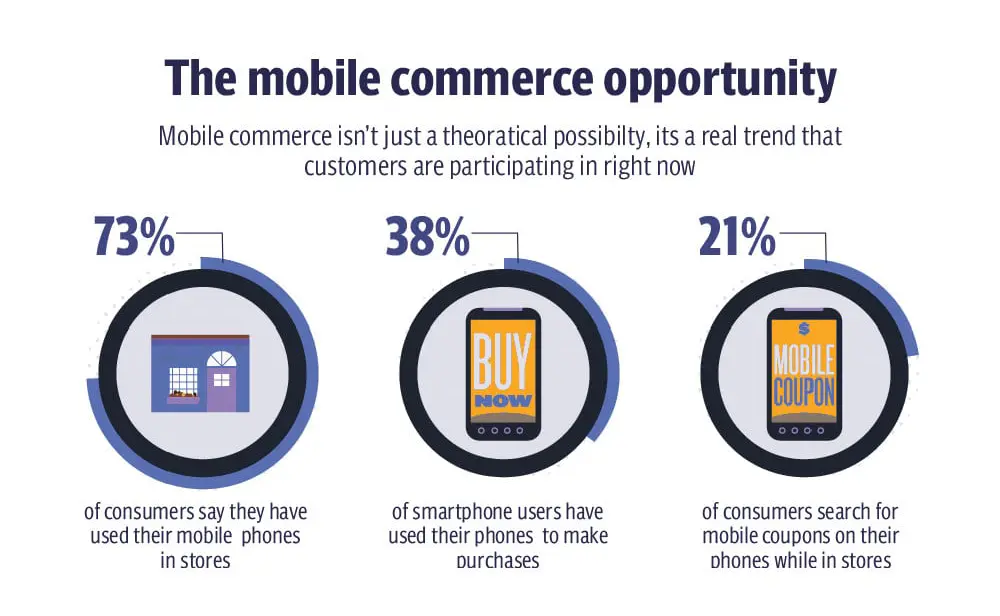Mobile commerce in Pakistan or m-commerce is transforming in Pakistan’s retail landscape. With increasing smartphone and internet penetration, more consumers are shopping online via mobile devices – spurring the growth of this emerging channel. This article analyzes the rise of m-commerce in Pakistan, its impact, benefits, challenges, and future outlook.
The Rise of Mobile Commerce in Pakistan
Pakistan had over 124 million 3G/4G subscribers as of early 2023, fueling mobile connectivity. The country also has a young, tech-savvy population with growing purchasing power. These factors have driven the adoption of m-commerce. To understand the roots of this transformation, consider our detailed insights into Understanding Payment Gateways in Pakistan, which lay the foundation for secure online transactions.
The e-commerce sector in Pakistan, largely mobile-driven, focuses on consumer products and accessories. Online customers search for and purchase consumer electronics, make employment queries, receive online education, and gather information on vehicles. The convenience of shopping anytime, anywhere, and the ability to compare prices and view goods have made online shopping increasingly popular. Discover practical tips for navigating this online marketplace in The Ultimate Guide to Online Shopping Tips in Pakistan.
As per industry reports, m-commerce sales in Pakistan will reach $2.1 billion by 2023, more than double from $1.2 billion in 2018. The number of online shoppers is also rising exponentially. These trends point to an m-commerce boom in the coming years.
Impact of M-Commerce Growth on Economy and Society
The rise of m-commerce has had a significant impact on Pakistan’s economy. The digital commerce market in Pakistan is projected to grow by 11.82% from 2024 to 2027, resulting in a market volume of US$18.26 billion in 2027. This growth not only generates job opportunities and enhances living standards, as discussed in our exploration of E-commerce Evolution in Pakistan: Trends and Opportunities, but also transforms shopping behaviors and ushers in new business models.
The growth of m-commerce is transforming shopping behaviors and enabling new business models in Pakistan:
- Convenience: Mobile apps allow instant, on-the-go purchases. Simplifying shopping for time-pressed consumers.
- Wider Reach: Retailers can access Pakistan’s massive mobile user base, beyond physical store locations.
- Personalization: Apps can offer customized recommendations and promotions based on user data and preferences.
- Payment Innovation: Mobile wallets like JazzCash enabling digital transactions even for the unbanked population.
Benefits and Opportunities
As m-commerce expands, it can deliver several economic benefits:
- Job creation in logistics, app development and allied industries
- Empowerment of small businesses through e-commerce enablement
- Increased financial inclusion through mobile banking/payments
- Access to more affordable products for lower-income segments

SMEs and startups have a vital opportunity to serve the growing m-commerce consumer base in Pakistan.
Challenges and Future Prospects
Despite its growth, m-commerce in Pakistan faces several challenges. A significant segment of the population lacks essential digital literacy skills, hindering their ability to navigate and trust online platforms. There are also disparities in internet connectivity and infrastructure inadequacies in rural regions. Furthermore, the absence of institutions and trade bodies to support and promote e-commerce has been identified as a significant challenge.
However, the future of m-commerce in Pakistan looks promising. The increasing internet penetration, advancements in logistics and supply chain management, and the introduction of mobile account services are expected to drive further growth. The government and businesses are actively engaged in efforts to confront these issues, with the aim of unlocking the full potential of the online retail market.
Below are the main challenges are faces in growth of mobile commerce in pakistan:
- Online payment fraud risk
- Underdeveloped logistics infrastructure
- Low bank account ownership
- Digital literacy gaps
Addressing these challenges will be key to realizing the full potential of m-commerce.
Future Trajectory
Pakistan’s young demographics, rising mobile penetration, and e-commerce friendly policies signal a thriving future for m-commerce. With smartphone usage hitting critical mass and next-generation 5G networks on the horizon, shopping via mobile is primed to become the preferred choice for digital natives. Retailers must gear up for an m-commerce led shopping transformation.
Conclusion
M-commerce has transformed the shopping landscape in Pakistan, offering unprecedented convenience and accessibility. While challenges remain, the future of m-commerce in Pakistan appears exceptionally promising, heralding a new era of shopping.
